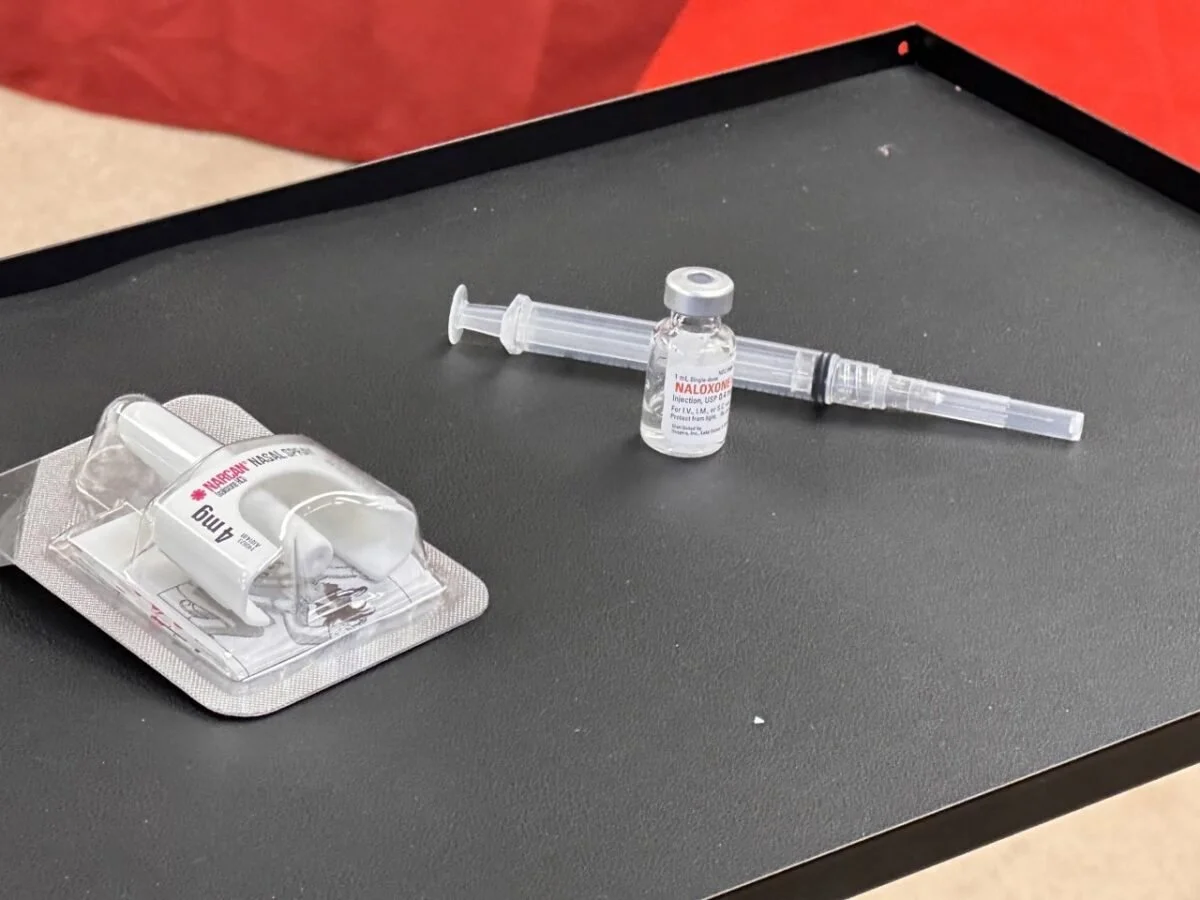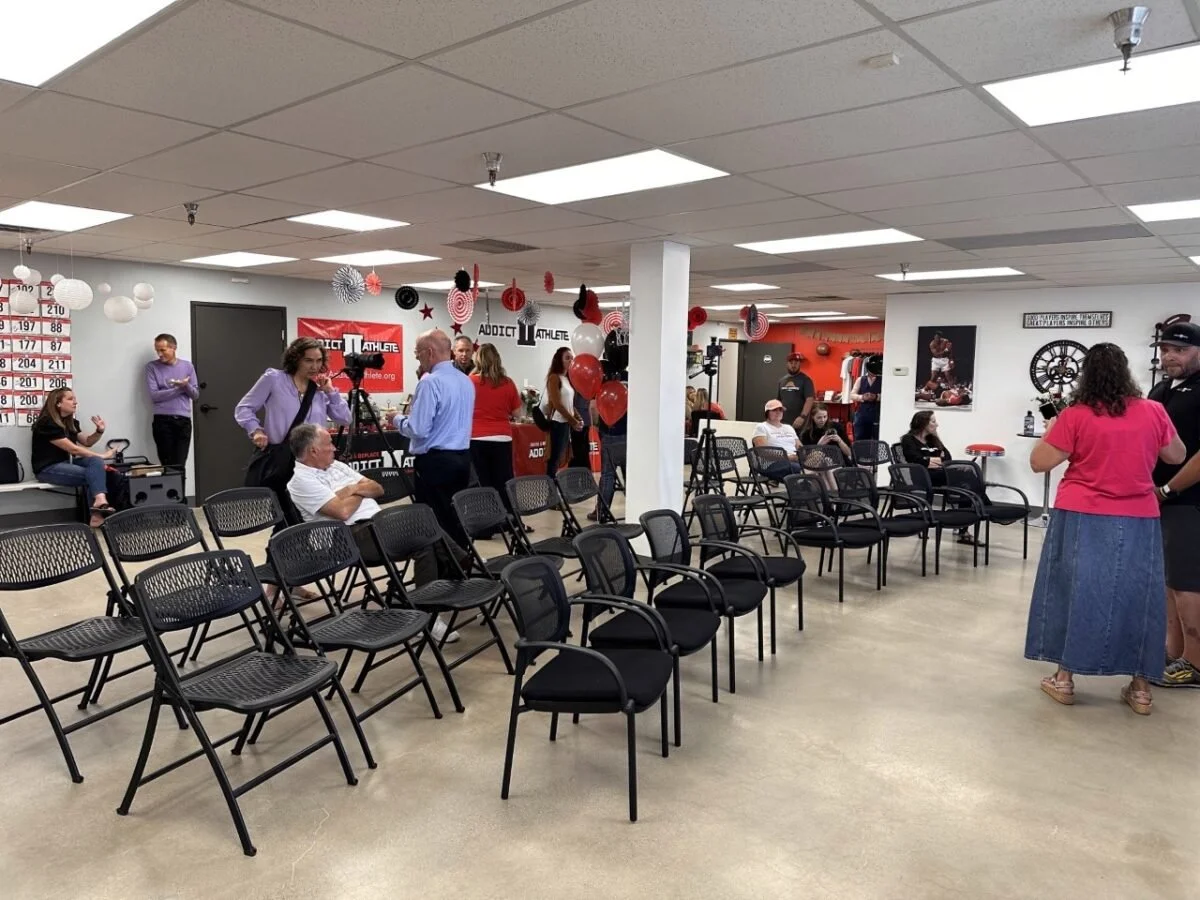Addict II Athlete hosts open house for Orem facility; health department leads Naloxone training
On Thursday, Addict II Athlete celebrated the opening of its new facility in Orem. According to Blu Robinson, organization founder and mental health counselor, Addict II Athlete started out under the premise that those struggling with active addiction needed more free programs than just Alcoholics and Narcotics Anonymous.
“I was working as a therapist for the Utah County Division of Substance Abuse, and they didn’t have a lot of other meetings outside of the traditional twelve steps,” he said. “I knew that health recreation, specifically mountain biking, helped me in my addiction when I was younger.”
Addict II Athlete is a nonprofit that offering free community support groups, personal training programs, as well as online support and resources to both those who struggle with addiction and those with addicted loved ones. Addict II Athlete members also participate in races and events, as well as service projects.
The Homebase houses AIIA offices, a meeting space, and a gym for the organization’s athletes.
Robinson co-founded AIIA in 2011 with his wife, Marissa Robinson, a certified therapeutic recreation specialist. The organization now has nine chapters, including one in the Utah State Prison with the newest chapter on the Uintah and Ouray Reservation.
AIIA’s mission is to establish and maintain recovery by promoting lifestyle changes by erasing negative behaviors and replacing them with positive ones.
“If someone asked me why team Addict II Athlete works, it’s hard to put your finger on it,” Blu Robinson said. “Is it the physical stuff, is it the team support, is it the service that we render, it’s all of that, so it’s kind of hard to measure all of that stuff.”
Blu Robinson wants to shed light on the overwhelming number of lives taken each year by substance abuse, and to help people to see addicted individuals for who they truly are, people who are trying to cope with the trauma they have experienced.
“The public at large they see the negative side,” Blu Robinson said. “We lose more people to substance abuse than we do gun violence, than we do heart disease, all these things, but we don’t hear about it because what do we do about it? If people could see an addict that struggles for that core issue, that they’ve been hurt, we’d probably give them more grace.”
Robinson said that a common thread linking all of the individuals he’s worked with is that their addiction stems from some kind of inner turmoil.
“Most people look at the symptoms of addiction. They see the substance abuse and that’s not the real problem, that’s a symptom of a deeper problem,” he said. “At the core of everyone I have worked with in the last 20 years, I’ve noticed that it all comes from something that hurts… if we can look past the stigma of the substance use itself and get to the core reason of why that person is using, you’ll find out that that can be treated and healed.”
Blu Robinson believes in addressing the core issues that fuel addiction in order to help AIIA participants heal. “I don’t really like that word much, recovery because there has to be a point where you stop recovering and you begin to heal,” he said. “Instead of just focusing on that negative part, if we can move it, and learn from it, and let that stuff go, you can start to heal.”
The Addict II Athlete office is located at 1875 S State Street, Suite T500, in Orem.
As hard as Blu Robinson and the Addict II Athlete team works, substance abuse continues to be a nationwide problem. According to the Centers for Disease Control, 91,799 drug overdose deaths occurred in the United States in 2020.
That’s why, as part of the open house, the Utah County Health Department hosted a free Naloxone training.
Nicknamed the “Lazarus Drug,” Naloxone is an opioid overdose antidote that has been known to resuscitate individuals that are no longer breathing. Naloxone works by removing opioids from the pain receptors in the brain, and then binding to those same receptors, essentially restoring typical nervous system function.
Opioids are highly addictive narcotic substances that are commonly prescribed to treat pain, such as Oxycodone, Codeine, Tramadol, and Hydrocodone. According to opidemic.org, 80% of heroin users start with prescription opioids, and five Utahans die every week from an opioid overdose.
During the training, attendees learned how to prevent an opioid overdose in five steps. The first step is to recognize the signs of an opioid overdose, including:
Small, pinpoint pupils
Won’t wake up, has a limp body
Faint heartbeat
Shallow or stopped breathing
Blue or purple fingernails and lips
Gurgling or choking noises
From there, members of the public are taught to react (try and wake the person experiencing an overdose), administer Naloxone, proceed with rescue breathing if the overdosing individual has a pulse but is not breathing and, finally, stay with the overdosing individual until emergency services arrive.
Due to Utah’s Good Samaritan Law, bystanders can report an overdose without fear of criminal prosecution for illegal possession of drugs or controlled substances.
Utah has a Naloxone standing order, which allows pharmacists to distribute Naloxone to a third party without a prescription. Due to the Naloxone Law, individuals can administer Naloxone without fear of legal liability. The effects of Naloxone can last anywhere from 30 to 90 minutes, after which the individual is at risk of another overdose if the opioids are still in their system.
For more information on Naloxone and where to get it for free in Utah County, visit https://utahvalleydpc.org/what-is-naloxone/.


